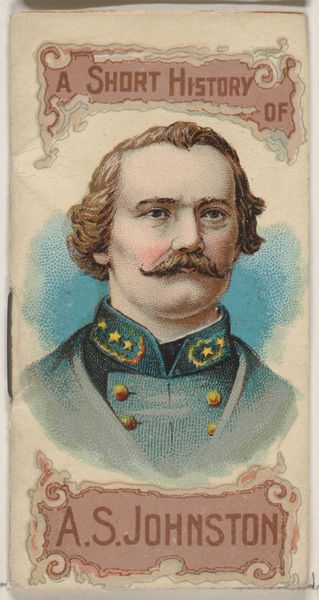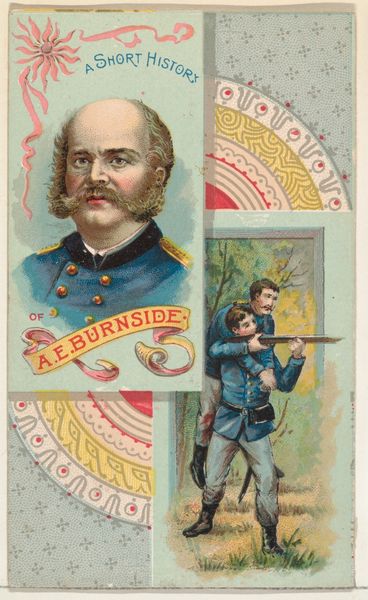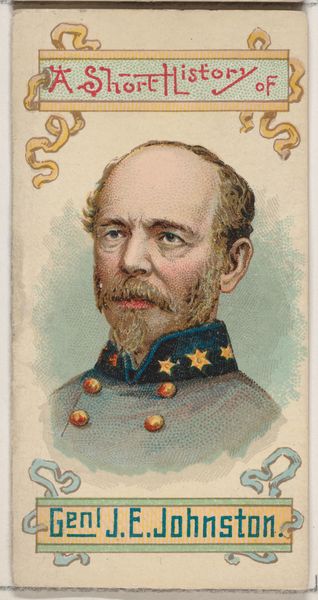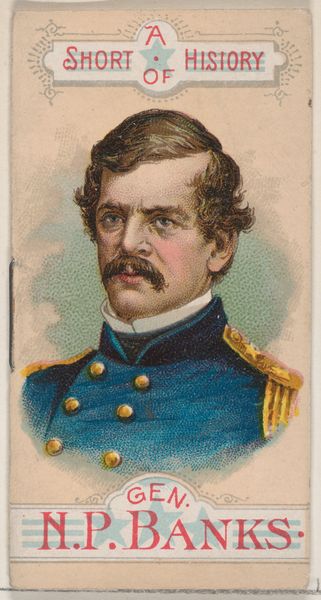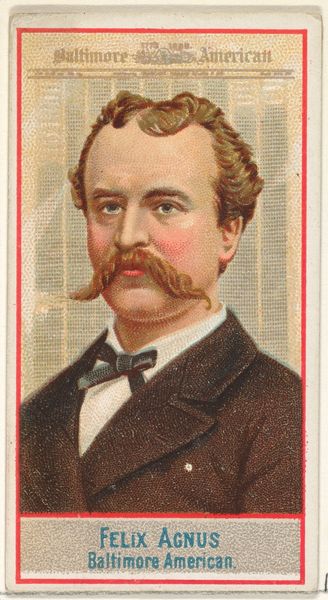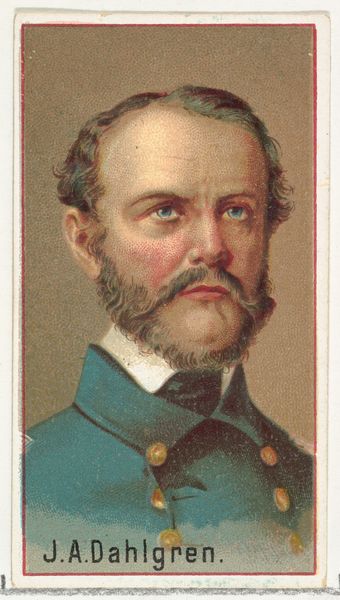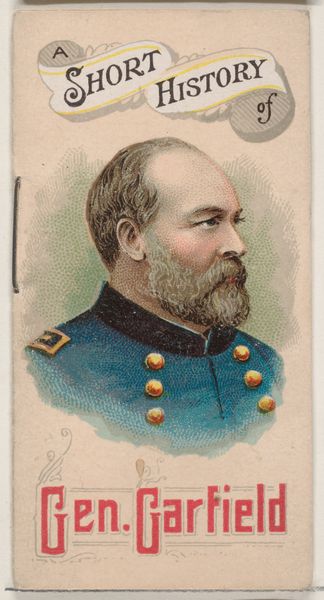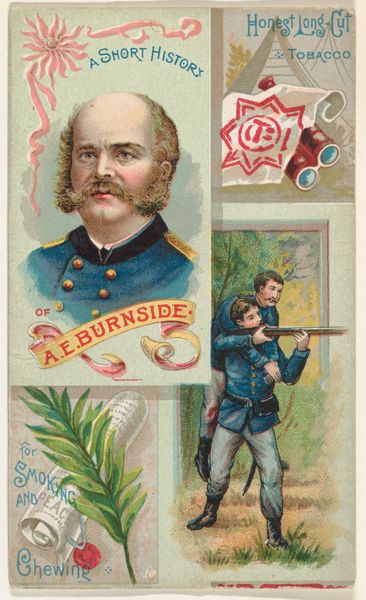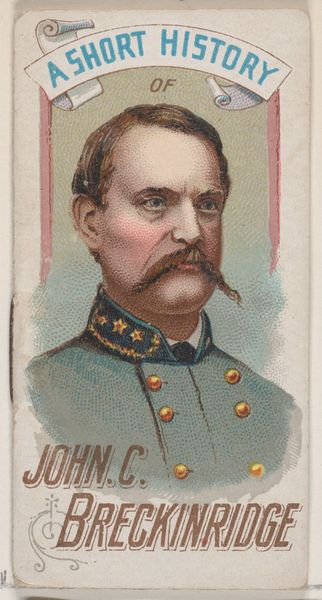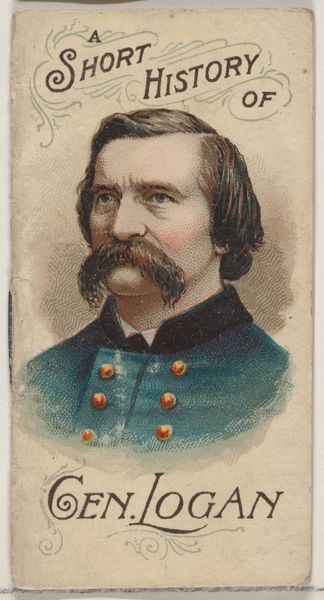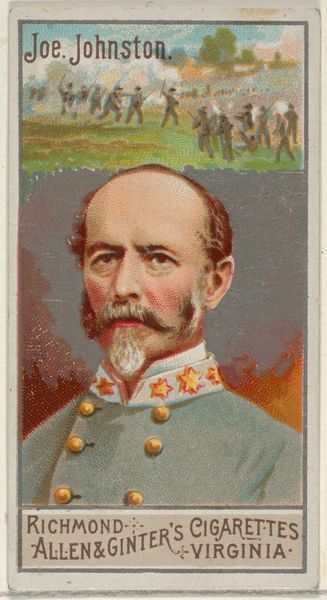
A Short History of General Ambrose Everett Burnside, from the Histories of Generals series of booklets (N78) for Duke brand cigarettes 1888
0:00
0:00
drawing, graphic-art, print
#
portrait
#
drawing
#
graphic-art
# print
#
caricature
#
caricature
#
history-painting
Dimensions: Overall (Booklet closed): 2 3/4 × 1 1/2 in. (7 × 3.8 cm) Overall (Booklet open): 2 3/4 × 2 7/8 in. (7 × 7.3 cm)
Copyright: Public Domain
Editor: Here we have "A Short History of General Ambrose Everett Burnside," a print from 1888 by W. Duke, Sons & Co. It's part of a series of booklets packaged with Duke brand cigarettes. I’m immediately struck by the caricatured features – the oversized whiskers, the pink cheeks – almost as if it’s making a statement, though I'm not quite sure what that is. What do you make of this piece? Curator: It’s intriguing, isn’t it? Consider the context: it’s 1888, decades after the Civil War, yet Burnside remains a figure present in popular culture through, of all things, cigarette cards. The caricature, you see, it isn’t just humorous; it’s a cultural act. How does it negotiate Burnside's legacy – a general often criticized for his failures – in a moment grappling with Reconstruction and its aftermath? Editor: So, it's less about accurately representing Burnside and more about… what? Managing his image for a specific audience? Curator: Exactly! And who is that audience? Predominantly white, male smokers. The card serves as a small piece of propaganda, reinforcing a particular narrative of American history and, perhaps subconsciously, reaffirming power structures. Does the idealization serve to legitimize not just Burnside but a particular version of history and masculinity? Editor: I never thought about it like that. I saw the caricature, but I didn't connect it to the social forces at play. Curator: These seemingly innocuous images can be incredibly potent tools in shaping public perception. Always consider what they are obscuring or idealizing and, more importantly, why. It prompts questions about whose stories get told, and how, and through what means. Editor: Right, the history on a cigarette card! It really puts a new perspective on everyday objects and the messages they convey. Thank you! Curator: A pleasure! Remembering that art objects live within, and actively shape, culture allows us to read them anew, time and again.
Comments
No comments
Be the first to comment and join the conversation on the ultimate creative platform.

